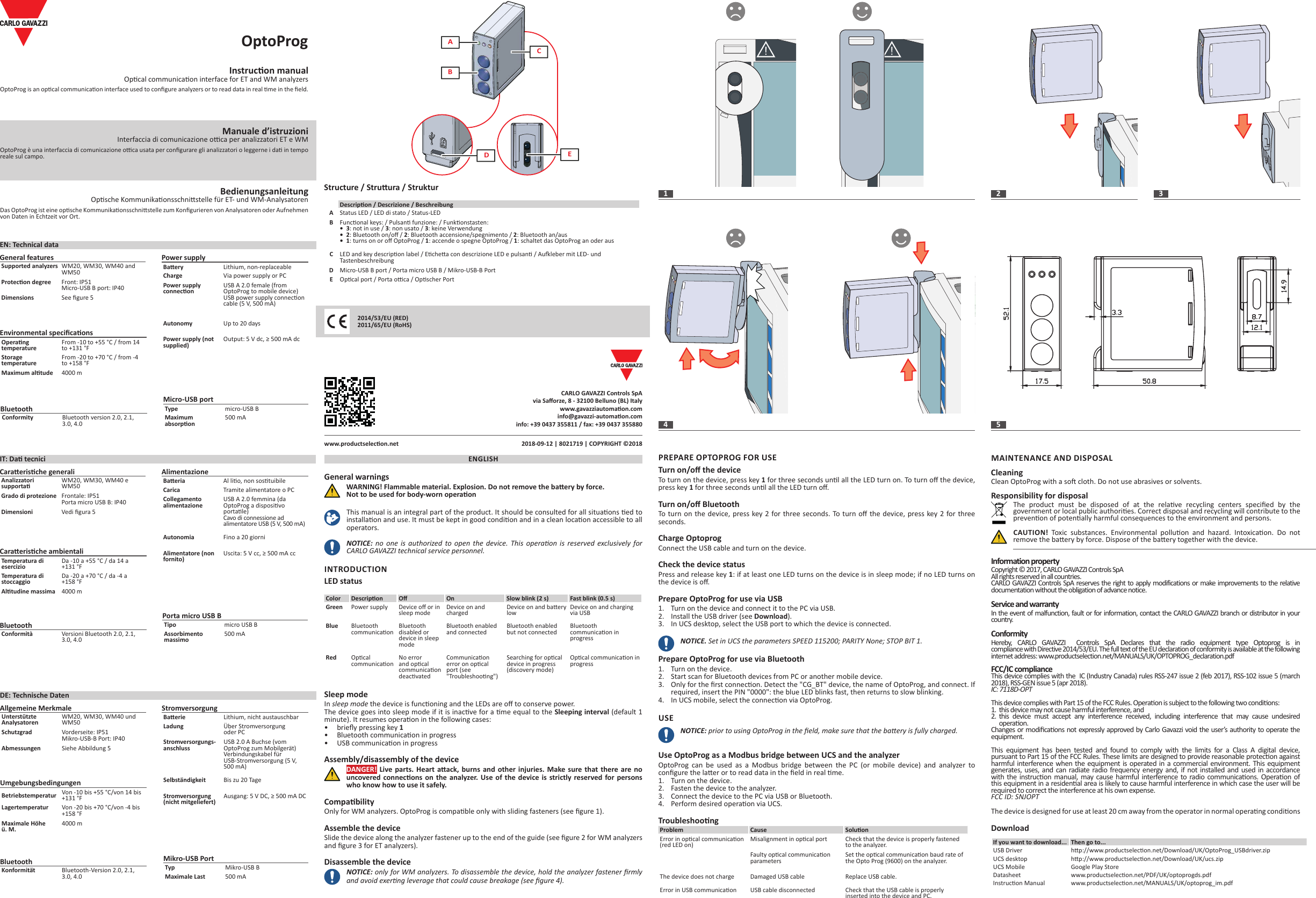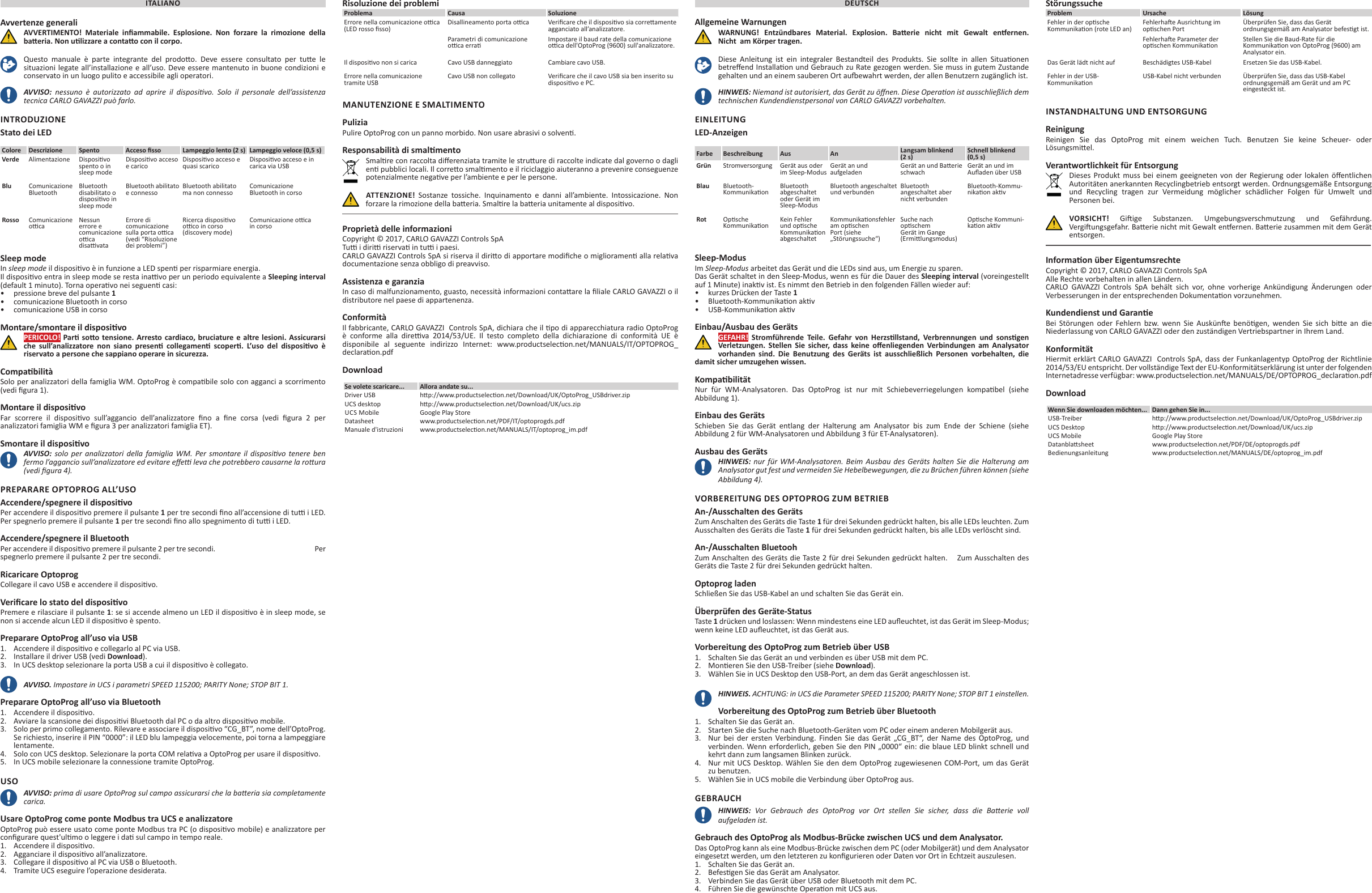CARLO GAVAZZI CONTROLS OPT Optical communication interface for ET and WM analyzers User Manual 8021719 8021798 OptoProg IM ML 2606218 indd
CARLO GAVAZZI CONTROLS SPA Optical communication interface for ET and WM analyzers 8021719 8021798 OptoProg IM ML 2606218 indd
Users manual

